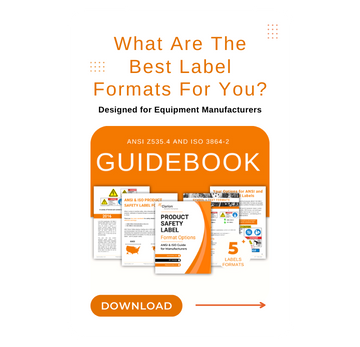
Product Liability Evolves to Premises
For U.S. companies, a major connection is being drawn between their liability exposure and their safety sign system. Courts are now finding that those responsible for safety must provide people with the information they need to be aware of potentially hazardous situations and to explain to people how to avoid them. This expectation evolved out of product liability law developed between 1970 and 2000 which holds product manufacturers responsible for a “duty to warn” of potential hazards associated with the product’s expected life. When a product manufacturer does not meet their legal “duty to warn” and someone gets hurt using their product, a lawsuit often results that contains allegations of “failure to warn” or “inadequate warnings.”
The Need for Better Signage
What’s new is that this theory of the duty to warn is being applied to premises owners when accidents happen that could have been avoided if people had been better informed. For good or for bad, the expansion of the “duty to warn” from products liability law into the arena of premises liability effectively creates the need for better environmental and facility safety sign systems. On September 11, 2013, OSHA recognized this need and incorporated references to the latest ANSI Z535 safety sign standards into its regulations.
The net effect of the OSHA update and the application of the duty to warn to premises owners is that the safety signs you install on your property should do the same job as warnings do for products; they must inform the viewer of potential hazards and actions needed to avoid these hazards. Gone are the days when the old DANGER – HIGH VOLTAGE signs are good enough. This sign style, with its overly simplistic short message, is actually based on a 1941 standard for safety signs. A lot has changed in 70+ years! The previous job of a sign was only to “identify” hazards; typically they did so in very general terms. Today’s expectations for safety signs, as mentioned above, set by courts for what constitutes an “adequate warning” and by the ANSI Z535 standards, means that safety signs must do much more than identify hazards.
The New, Higher Bar for Safety Communication
OSHA’s recognition of the ANSI Z535 standards is expected to result in two things:
- Safety conscious companies will adopt the new ANSI Z535 sign technology.
- Companies that do not install new ANSI Z535 sign technology will have significant liability exposure if an accident occurs that results in injuries and safety communication is at issue.
Solving the Problem – Creating OSHA/ANSI Safety Sign Systems
When it comes to creating safety sign systems that both improve safety and reduce liability exposure, there are many aspects to give careful consideration to. Not only does your safety sign system need to comply with the latest standards, but it likely also needs to be tailored to convey information specifically related to your premises, buildings, processes or potential hazards. Here at Clarion Safety, we stand ready as your resource to help you understand and implement best practice safety sign systems for your workplace that meet the latest OSHA regulations, and use today’s best practices established by ANSI and ISO.
